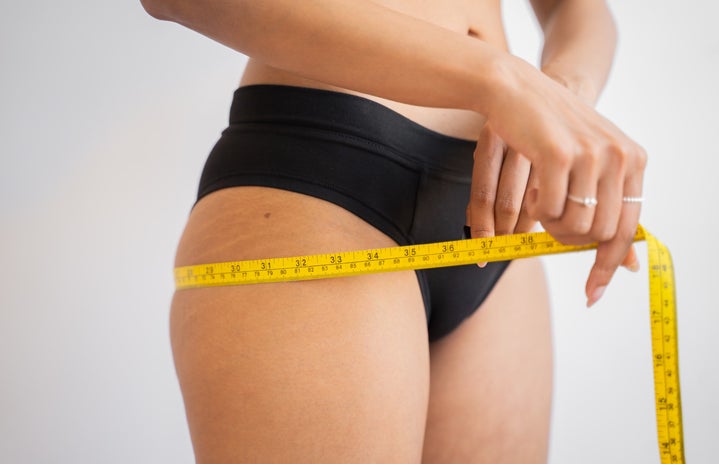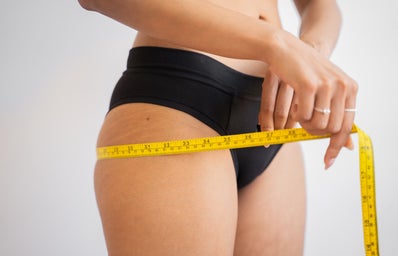Who says that being skinny is the only way of being fashionable?
While social movements like body positivity dare us to ask ourselves this question, the truth is that the fashion and modeling industries seem to be obsessed with thinness, and ordinary consumers are the ones paying the price.
Fashion designer Karl Lagerfeld was quoted making fatphobic comments multiple times throughout the years.
“No one wants to see curvy women on the runway,” said Lagerfeld on an episode of the French TV series “Le Grand.”
The fashion and modeling industries have a big impact on society. Therefore, they should start promoting inclusivity through their models and products. The goal should not be to stop romanticizing thin bodies and start romanticizing bigger bodies. It should be to stop romanticizing body types altogether.
The preference for thinness in fashion and American society can be traced back to the post-World War I era. According to Maryland Center for History and Culture, after WWI, “instead of reverting to the modesty of the Victorian era, women ditched their corsets and cut their hair short and so the flapper was born.”
There is nothing wrong with being naturally thin. However, romanticizing and promoting this body type makes it seem like it is the only option, even for those who were not born with it. This obsession makes many impressionable people, especially young women, resort to extreme measures to achieve the look that is considered ideal, which is exactly what happened in the 1920s.
Because of the idealization of the flapper style and body, many women started doing “special diets” and smoking excessively to maintain a slender figure, says Atlas Obscura. The ideal flapper had slim hips, a straight waist, and a flat chest. The perfect flapper dress consisted of a straight and slim silhouette, highlighting her slenderness.
By the 1990s, the fashion industry had popularized the heroin chic figure, bringing back thin as the ideal body type. British model Kate Moss became many photographers’ muse, and her body became many teenagers’ ultimate goal. Many of the trends from the late 1990s also highlighted thinness. Some examples are The micro-mini skirt and low-rise jeans, both of which made their way into the 2000s and are now making a comeback in the 2020s.
“Nothing tastes as good as skinny feels” is a quote used and popularized by Moss in 2009. Though, she has since expressed regret for saying the quote, according to BBC news.
In the 2010s, celebrities like Kim Kardashian popularized the hourglass figure, which also brought back another unattainable beauty standard for many people and created insecurities. This is why movements like body positivity gained recognition and encouraged people to love and accept their bodies as they are. Being exposed to body diversity helps people feel like they have a place in society regardless of their body type.
Fast forward to 2023, thinness as a trend seems to be taking over the fashion scene once again. American supermodel Bella Hadid’s popularity on the internet also seems to have increased over the past five years, and her body also seems to have been deemed the standard for many young women on the internet.
“My name is Bella Hadid” are five words that could well be replaced with “skinny is a collective goal.” A clip from the model’s 2022 cover shoot with i-D Magazine became a viral TikTok trend when users started attaching her voice to videos of them feeling attractive because they feel skinny.
Although many the videos using this audio are supposed to be humorous and do not mean that the creators are experiencing some form of body dysmorphia, some internet users feel overwhelmed by the collective idea that Bella Hadid has the “ideal” body type.
Another effect this obsession has caused is that of celebrities drastically losing weight. In 2022, many internet users accused Kim and Khloé Kardashian of removing their never confirmed Brazilian Butt Lifts (BBL) says The New York Post. They both also seemed to have lost weight drastically. Every day more celebrities seem to be losing weight one after the other. While it is okay to make personal decisions about your body, as audiences we must analyze how seeing everyone strive to look the same affects us.
When celebrities like The Kardashians have a dramatic physical transformation, it pushes the narrative that body shapes and sizes are nothing but a trend and communicates to the public that they must hurry in changing their physical appearance if they want to catch up. This can lead to body dysmorphia and eating disorders, according to the University of Colorado.
When the fashion and modeling industries refuse to open their doors to people who do not fit their standards, they cause unnecessary harm to consumers. Society should not romanticize some bodies and marginalize others. There should be a space in every industry for body diversity regardless of shape.
If you or someone you know are struggling with disordered eating, you can contact the NEDA Helpline for support via phone call or text at (800) 931-2237 or via online chat.


